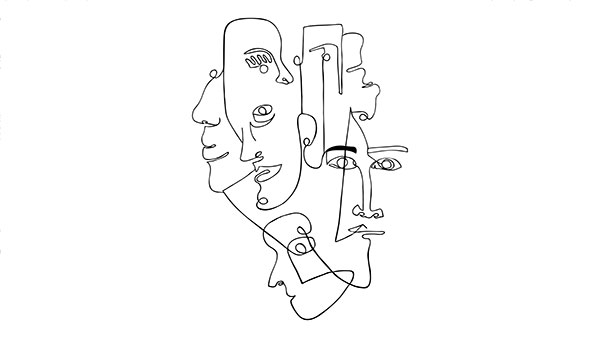Richard James FRSA shares the Intensive Engagement methodology, originally designed to engage with communities and reduce crime.
Now he invites the Fellowship to help scale and apply it to other social issues across our communities too.
If a police officer were to knock on your door and ask whether you wanted to be part of the solution in reducing crime in your neighbourhood, what would you say?
It seems the answer, for most people, would be “yes”. This is not surprising to me; with Tim Curtis FRSA, I have spent the last 10 years working with communities to reduce crime. Our approach, known as Intensive Engagement (IE), emerged from my experience as the Police Territorial Commander in Northamptonshire where, in the wake of the 2008 financial crisis, I was tasked with reducing his budget for community policing by 20%. This meant having to develop a way to better understand and engage with the communities most affected by crime. Joining forces with Tim, a Senior Lecturer in Social Innovation at Northampton University, we set out to pilot and develop an approach that is proving highly effective at tackling crimes, anti-social behaviour, including drug and county lines activity.

Crime is clearly an issue that can affect everyone’s quality of life. Too often people feel like powerless bystanders when it comes to the issues in their area that matter to them. Most people, even in crime hotspots, have little or no contact with the police. Years of austerity have decimated community policing capacity meaning police only have the time to engage with either perpetrators or victims of crime. Policing has long recognised prevention is better than cure and that crime is most regularly a symptom of many other problems including poverty, family breakdown, mental health and drug addiction. Such problems fall outside the remit of police and straddle a range of statutory agencies.
However, there has been a growing consensus on taking a ‘public health’ approach to violent crime. Proponents argue that violent crime should be treated like an infectious disease that requires preventative measures to stop its spread. Clearly a collaborative approach is essential, and several initiatives are underway to enable multiple public and social services to work together. Working with other statutory agencies is important, but these too are cash strapped and resources are also sucked up with crisis management and extreme cases. As a result, public agencies rarely have the time and energy required to actively engage the communities in these efforts.
The Intensive Engagement experience demonstrates that this is mistake and a missed opportunity and is now being developed to tackle an increasing number of complex community issues. Intensive Engagement provides both a strategic and tactical framework that delivers an evidence-based approach to community engagement. It involves working locally within communities, and at the same time engaging directly with leaders and authorities. Participants at all levels can share powerful insights, identify assets that individuals and communities offer, and build a sustainable framework of participation that extends from street level activity to new leadership collaboration.
If the Covid-19 crisis has demonstrated anything, it is the immense power of communities to organise and respond to a public health crisis. Within days of lockdown, the UK saw a spontaneous expansion and emergence of mutual-aid and other self-help groups in almost every community. Such responses are evidence that a reservoir of goodwill and ‘neighbourliness’ exists within all communities but one which, for the most part, goes untapped. This is something the Intensive Engagement approach has been tapping into this for many years.
How does it work?
The Intensive Engagement approach has demonstrated success in reducing crime through community involvement and has been primarily implemented in very clearly defined and often poor neighbourhoods. In 2014 a Northamptonshire Police analyst concluded that the pilot area had seen a much bigger improvement when compared to the rest of Northampton and that: “One might wish to conclude from this that the LISP Intensive Community Engagement techniques are 15% more effective than standard policing.”
The approach was developed as a police-led initiative to address crime but it is increasingly clear the key elements of its success can be universally applied. A full Intensive Engagement process incorporates eight steps however the team have identified three broad elements to its success.
1. Mapping assets
In the case of crime, too often hotspots are defined in terms of their problems and negative statistics. The Intensive Engagement approach sees the mapping process as critical and a chance to encourage a more positive sense of identity. Although mapping does list an area’s physical amenities or facilities – for example, parks or community halls – primarily it involves mapping human assets and capabilities; understanding who is in the community and what they can offer.
This is not and cannot be a desk exercise, it must involve meeting individuals face-to-face where they live and work. It can be done in several ways, but each involves significant time and effort. Although the process has been led by local police officers, local teams will often include a range of local actors including local or health authorities, NGOs or faith-based organisations. In the Chalvey neighbourhood in Slough a local police officer has visited over 500 households and businesses. With colleagues he is knocking on doors and mapping people’s concerns on crime and their willingness to be ‘part of the solution’. So far more than 500 people have agreed to take part.
Individuals interested in being part of the solution are then asked a few additional questions to assess the community engagement potential based on their capacity and connectivity. Capacity reflects the skills and experience they have to offer to their community. This could entail experience of managing teams or running events, to speaking several languages or even an ability to fix bikes, cook or paint and a willingness to teach these skills to others. Connectivity reflects an individual’s local network and the range and frequency of contacts they have. The mapping process identifies the nodes and networks via which information (and money and power) flows around a community. For example, a local football coach or the owner of the local newsagent or a hairdresser will interact with dozens of local but different types of residents on a daily basis.
By walking the streets and reaching out to communities it is possible to connect with a far wider range of individuals than more passive approaches to consultation such as town hall meetings or sending emails. Too often such consultation only captures the interest or views of certain demographics; typically semi or retired middle aged individuals with time on their hands. While well meaning, these residents are generally detached from those who are, or at risk of, committing or being a victim of violent crime. By reaching out and finding groups that don’t normally participate the process connects with ‘grass roots’ individuals, for example teenage boys, single mothers or ethnic minorities. In Chalvey the local authority provided the Intensive Engagement translators to ensure language barriers did not result in non-English speakers being missed out in the mapping.
The process of mapping a community in this way is resource intensive however it creates a highly valuable ‘asset’ in itself when in place. In recent exercises the mapping has been done digitally (GIS) making it is easier to use, share and update.
2. Gaining insight and trust
The mapping exercise is resource intensive but yields results in terms of insights and trust. Having taken the time and effort to find and engage with so many local individuals the Intensive Engagement team can gain a much deeper understanding who lives in the local community. For example, prior to the mapping exercise in Chalvey, the team estimated there were between three to eight different languages spoken in the neighbourhood. However, based on the mapping undertaken to date we have already logged 63!
The mapping process works to identify the demographics of an area as well as pinpointing the trusted individuals who can act as ‘bridges’ to communicate with key but hard to reach groups. In Northampton, the team was able to identify individuals to facilitate conversations with Muslim women, a group who would never normally participate in local meetings. In discussions they explained their concerns on the radicalisation of their teenage children. Although not the original focus of the crime concerns in the area it provided a valuable insight to wider problems. These women were able to contribute in developing initiatives to address radicalisation, an invaluable and unexpected benefit of the process.
Over the years the Intensive Engagement team has developed several very effective exercises to facilitate dialogue and problem defining and solving with different groups identified in the mapping process. This includes a key exercise, known as Rich Picturing, which involves asking groups from all ages and backgrounds to describe and draw their neighbourhood. The picture they produce describe how they experience or feel about certain places or activities. The results provide fascinating insights into how different people view the same place. Individual and group pictures can be combined to form composite rich pictures which can be used to focus discussion and debate on what needs to change and how.
3. Engendering participation
The entire process is by its nature highly participatory, a major factor in its success. We believe that this is a result of reaching out to people during the mapping process and then really listening them in exercises such as the rich picturing. This lays the foundations for communities to work together in planning and implementing solutions, which ultimately achieve positive change. It is important that communities lead this process and this can be difficult, as solutions almost always require external support from other stakeholders such as the police, local government and other bodies or donors.
Getting the balance right to ensure that communities feel they are in control of implementing activities that others may ultimately manage or pay for can be tricky. Statutory agencies can be highly siloed and bureaucratic and struggle to think beyond the activities and ‘budget lines’ for which they are accountable. Communities, however, tend to approach their problems holistically and hence develop people-centred solutions.
Not all police chiefs find it easy to allow ‘police money’ to being used for the initiatives communities have decided are needed to address the root causes of crime in their area, for example, community gardens or local sports clubs. But we have found that visionary leaders in local agencies that are prepared to yield power and hence resources to communities are essential to make this work.
Empowering communities – making this part of the ‘new normal’
As the Covid-19 pandemic and ensuing economic crises continue, empowering communities will be more important than ever before as we adjust to the ‘new normal’. To date Intensive Engagement projects have focussed on crime issues and with successful results: in Northampton crime in the area covered by the project dropped by 60%. However, it is becoming increasingly clear to the team that the process can be easily modified to address multiple local issues including Covid-19 and all its local repercussions. Although almost all local authorities claim to have community engagement policies or strategies, too many fail to translate these into real community participation. In some cases, they lack effective approaches, in others it is a failure to allocate the necessary resources required to help communities put the social infrastructure in place. This is likely to prove a false economy. What the Intensive Engagement experience shows is that when communities are supported to map and mobilise their capabilities, the social, economic and psychological benefits can be huge.
What we have long understood and the Covid-19 crisis has highlighted, is that communities are best placed to understand the physical, economic and social needs of their own citizens. This means they are ideally placed to provide bespoke solutions and personalised responses in ways that are simply beyond the organisational capacity of bureaucratic public authorities.
Perhaps the most important benefit of community-led responses is how the process and experience can empower residents. The Intensive Engagement process works because it empowers communities by making residents agents of change, not bystanders, on the issues affect them and their neighbours. It is not an attempt to save money by getting communities to undertake services on behalf of the police or statutory authorities but is about ensuring there is genuine collaboration from the whole community to better identify and solve problems together.
We are now exploring how they may apply the framework to wider societal challenges. The team are interested to hear from RSA Fellows who may be seeking a tested and evidence-based framework to reach further into current community capacity. This may be to tackle complex and embedded community challenges, it may be providing disaffected communities with a voice in service design, or tackling demand on over-stretched health providers and scaling youth provision. The Intensive Engagement framework can be applied swiftly and in numerous settings. It can rapidly identify and provide access to community assets that may help tackle the most pressing issues to ‘build back better, If this sounds like your journey and you are seeking an effective engagement framework then please do get in touch.
Richard James Mst (Cantab) is Managing Director Intensive Engagement Limited. He has a wealth of experience working with police, public authorities and communities in the UK and EU. His community work has been recognised with national awards. As a police leader Richard worked at strategic and operational levels in three UK police forces and commanded events of international significance. He recently undertook a Masters degree at Cambridge University to further understand the challenges and opportunities of effective authority and community engagement.Thank you to Catherine Fitzgibbon FRSA for her help with this blog.
Related articles
-
End the Criminalisation of Homelessness
Comment
Alex Kumar FRSA
Alex Kumar FRSA argues that scrapping the Vagrancy Act would make way for a more compassionate and effective collective response.
-
Connecting communities through the Arts
Comment
Salma Zulfiqar FRSA
Salma Zulfiqar FRSA on how her project ARTconnects has been responding to the current crisis.
-
Corporate criminal liability
Comment
Jon Mack FRSA
Jon Mack FRSA on holding corporations to account for the most serious criminal offences.




Join the discussion
Comments
Please login to post a comment or reply
Don't have an account? Click here to register.
We also understand that each 3D Product rendering work is unique and requires a comprehensive analysis to provide excellent results. Amz Optimizer renders things flawlessly and economically. https://www.amzoptimizer.com/3d-rendering